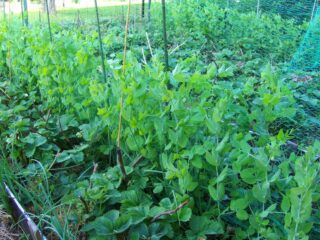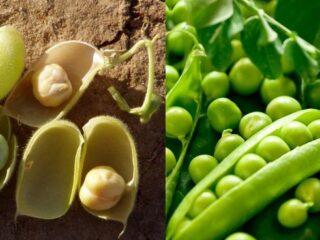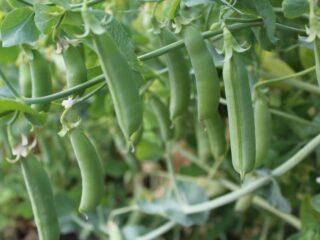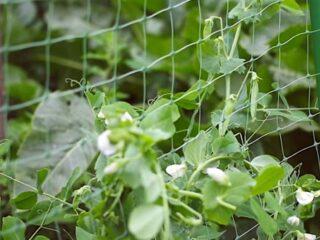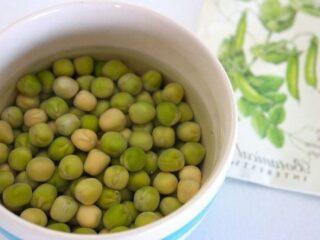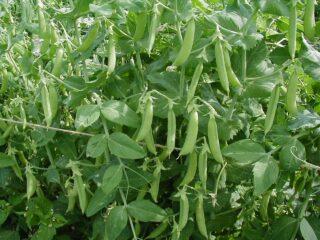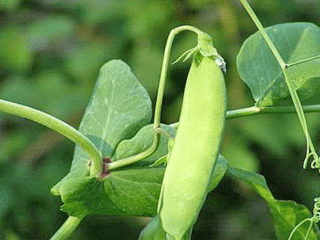Content
Housewives often grow green peas for cooking, canning and freezing. Early ripening varieties are very popular among summer residents. Gloriosa peas are an excellent representative of legumes.

Gardeners note the high characteristics of the Gloriosa variety when growing
Description of pea variety Gloriosa with photo
The variety belongs to the Legume family. Gloriosa is a high-yielding, sugary and early-ripening pea. You can grow it both in open ground and in a greenhouse or on a windowsill.

Large brain peas grown in the ground are collected for seeds and dried.
The fruit has a bright green color and a sweet taste. The Gloriosa variety is rich in vitamins: B6, K, A, S.R. Contains ascorbic and folic acids.
In cooking, it is used for preparing first and second courses and canning. Widely used in the production of baby food.
Pea yield Gloriosa
When choosing seeds, pay attention to the harvest date. If the harvest takes more than three years, the peas may not sprout or produce little fruit.
Gloriosa reaches a height of 80 cm. Fruit ripeness is up to 60 days from the time of sowing. The yield of the variety is 50 tons per 1 hectare. One pod contains up to nine peas.
Advantages and disadvantages
Like any vegetable crop, peas have advantages and disadvantages. The disadvantages include high demands on watering. In arid regions, it is recommended to mulch the bed to retain moisture in the soil.
The advantages include:
- precocity;
- amicable maturation;
- high productivity;
- widely used in gastronomy;
- unpretentiousness to soils;
- high germination;
- good taste;
- resistance to diseases.
How to plant Gloriosa peas
To get a good harvest, a small bed of 1*2 m is enough. The Gloriosa variety is planted in prepared soil. For better germination, the seeds are pre-soaked until sprouts appear.
Before disembarking, preparations are made:
- beds and soil;
- seeds;
- comply with the rules of agricultural planting technology.
Landing dates
Seedlings of the Gloriosa variety can withstand light frosts down to -6 0C. Therefore, it is recommended to sow peas in heated soil when a constant temperature is reached in April-May. Summer sowing to prolong ripening lasts until the tenth of July.
Seed preparation
Whole peas are selected for seeding material. Before planting, the seeds are soaked until shoots emerge. Place a cotton cloth in a plate and place peas inside. Add water to keep the rag wet.
Before planting in the ground, sprouted seeds are placed in a warm solution of boric acid. For the composition, take 1 g of boric acid and 5 liters of water. The seeds are left for 5-10 minutes.You can replace the solution with growth stimulants such as Epin or Zircon.

Treating seeds with fungicides before sowing will increase plant immunity and simplify pest control.
Antimicrobial agents reduce the likelihood of fungal diseases. It is recommended to sow sprouted pea seeds carefully so as not to damage the young shoots.
Preparing the beds and soil
Peas prefer light soil and well-lit places. Gusty winds can bend and break stems, so the bed should be in a protected area.
Experienced summer residents recommend sowing peas in different places around the plot near the trunks of young fruit trees. The small crown allows the sun's rays to penetrate and protects from the sun in hot weather. In addition, a garter can be constructed by tying a cord from the pea to the trunk. The moisture needed by the Gloriosa variety is retained in the trunk circle.
To achieve an excellent harvest, experts advise observing crop rotation every four years. Cucumbers, potatoes, cabbage and pumpkin are considered good predecessors for peas. Potassium and phosphorus fertilizers are applied to these vegetables, which will later give the fruits of the Gloriosa variety a delicate texture. If you fertilize the soil before sowing peas, they will begin to “fat” and go into the tops.
Preparation of the selected bed begins in the fall. Potassium-phosphorus fertilizers are added to the soil for digging. In the spring, the bed is loosened or dug up and nitrogen-containing minerals are added.
Landing rules
Gloriosa peas are sown in rows every 25 cm to a depth of 3-4 cm. The distance between the seeds should be 7-10 cm. To protect young shoots from birds, the sowing is covered with a net or agrofibre.
To extend the harvesting period, sowing is carried out in several stages with a frequency of ten days. To obtain a rich harvest, experts advise sowing Gloriosa peas according to the pattern 10-15x25-30 cm.

If the site is located on sandy soils, the seeds are buried 8 cm, in black soil - 6 cm
A distance of 50 cm is maintained between pea beds. Ash and compost added before planting increase productivity. The support is installed before the shoots appear, so that the shoots cling to the mustache and weave in height.
Care
Caring for Gloriosa peas is simple. Shelter is necessary until the seedlings reach a height of 10-15 cm. Timely weeding and watering are important. Fertilizing is done with liquid nitrogenous fertilizers on the leaves.
Watering
Watering is required for peas frequently, but so that the soil does not become waterlogged, otherwise rotting will occur. If the pods are allowed to dry out, the Gloriosa pea crop will lose its beneficial properties.
Top dressing
Fertilizer is produced during the ripening process of the pods. Apply nitrogen-containing liquid products to the stem. Feeding is done in the morning before ten o'clock or in the evening in dry weather.
Topping
To increase productivity, pinch the tops of peas at a height of 20-25 cm, leaving 4-5 true leaves. The next stage of pinching is carried out on the side shoots, leaving 3-4 leaves. The plant will develop greatly and give a good harvest.
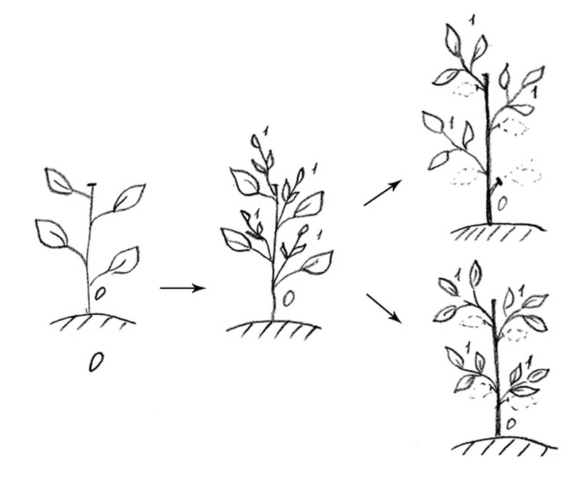
To make it convenient for the plant to branch, install supports or pull a rope on each row.
Garter
When the plant reaches 20-25 cm in height, it will look for support. Therefore, gardeners pre-stretch the cord in 2-3 rows above the rows at intervals of 20 cm. Or install pegs near each bush.
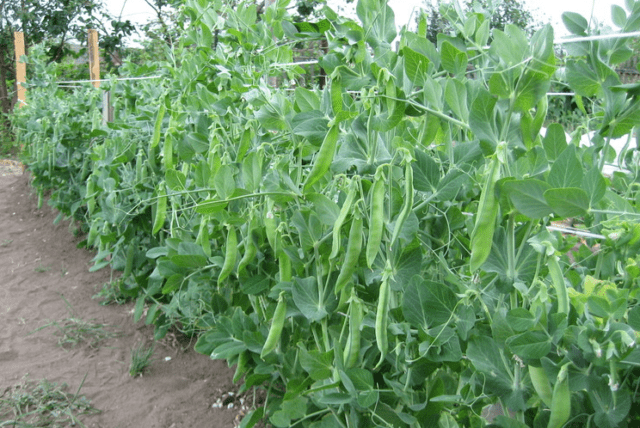
Harvesting for canning begins earlier so that the peas are juicy and do not have time to dry out.
Disease and pest control
The worst pests of Gloriosa peas are leaf rollers and aphids. Caterpillars overwinter in the soil, butterflies wake up at the moment of flowering. Pests lay eggs on the back of the leaf. After a week, small caterpillars appear and make their way into the young pod, destroying the peas. Gardeners give several ways to combat the codling moth:
- Once every 7-10 days, plants are sprayed with infusion of tomato tops (3 kg of tomato tops are poured with 10 liters of water and left for 3-7 days).
- Treat with garlic infusion. 20 g of garlic are crushed and poured into 10 liters of water, left to infuse for a day, the product is filtered and sprayed with a spray bottle.
A solution of field sow thistle helps against powdery mildew. An infusion of 300 g of leaves and 10 liters of water is left to mature for 12 hours. Then the stems are processed.
A decoction of 1 kg of onion peel and 5 liters of water with the addition of soap helps against aphids. A solution of ammonia is also used in proportions of 2 tbsp. l. and 10 liters of water.

To repel pests and at the same time fertilize the plant, use a mixture of tobacco dust and ash
Conclusion
Gloriosa peas are famous for their high yield and early ripening. By following all the advice on agricultural technology, summer residents get excellent results. Strict adherence to step-by-step recommendations on time will allow you to get a rich harvest.
Reviews of Gloriosa peas
